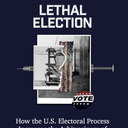Reversing its long-standing support for capital punishment, the Spokane Spokesman-Review recently published an editorial calling for an end to capital punishment in the United States. The paper noted that the decision to change its stance on the death penalty came after careful consideration of growing evidence that the newspaper’s “expectations of fairness and justice” are not being met and that the death penalty’s “drawbacks now outweigh its merits.” The editorial in full:
It took Jermaine Herron seven minutes to die, but it took Texas seven years to kill him. “I’ll tell you what the cruel and unusual punishment is,” said Jerry Nutt, whose wife and son Herron shot to death, “it’s the victims having to wait for justice.”
Nutt doesn’t realize it, but Herron’s journey from sentencing in 1999 to death by lethal injection 11 days ago in Huntsville, Texas, was swift. Nationally, the average wait on death row is more than 10 years.
Consider Dwayne Woods, who was sentenced in Spokane County to die for beating Telisha Shaver and Jade Moore to death with a baseball bat. That was in 1997, and Woods is still on death row, even though he initially asked for the death penalty.
Among the industrialized nations of the world, only the United States and Japan allow capital punishment. Of the 26 members of NATO, only the United States and Latvia allow capital punishment – and Latvia is perceived to be moving toward abolition of the death penalty. Because of the delays, the inconsistency, the drain on the public purse and the nightmarish possibility of executing an innocent person, it is time for the United States to end the practice.
Duncan case
In Idaho, Joseph Edward Duncan III is scheduled to go to trial in October, accused of slaying Brenda Groene, her son Slade and her boyfriend, Mark McKenzie, a year ago at Wolf Lodge. Federal charges also are pending in the kidnapping of Shasta and Dylan Groene and Dylan’s death in Montana.
If Kootenai County Prosecutor Bill Douglas convicts Duncan and wins the death penalty, which he says he’ll seek, he’ll still have years of effort cut out for himself and probably his successors. Kootenai County will spend millions of dollars and a decade or longer of legal work before Duncan or any other defendant convicted today is put to death. Of the 20 people now on death row in Idaho, seven have been there longer than 20 years.
Steve Groene, the father of Slade, Shasta and Dylan, has encouraged Douglas to drop capital punishment in a plea bargain for life in prison without parole. Other relatives of the victims disagree, says Douglas, thus calling attention to one of many reasons to question whether capital punishment is administered with the evenhandedness that the American justice system professes.
Once a murder has been committed, is execution justified by the circumstances of the crime – or by the disposition of the victim’s survivors? Are those who die alone and abandoned less entitled to have the law’s sternest penalty applied on their behalf than those whose parents, spouses and children can make a persuasive plea for retribution?
Justice delayed
While Supreme Court Justices Stephen Breyer and John Paul Stevens have questioned the constitutionality of lengthy delays between sentencing and execution, their colleague Justice Clarence Thomas wonders what else to expect when you “arm capital defendants with an arsenal of ‘constitutional’ claims with which they may delay their executions. …”
Thomas’ reasoning is appealing but deceptive. Those constitutional claims are protection against grim, irreversible mistakes. If Charles Fain, for example, had been put to death during his nearly 18 years on Idaho’s death row, it would have been too late for the DNA tests that eventually proved the blood sample used to convict him wasn’t his. In 2001, the same year Fain was freed in Idaho, Illinois Gov. George Ryan, his faith in the system shaken by a string of exonerations, imposed a moratorium on capital punishment in his state.
Unfortunately, mistakes and vagaries are more common in death cases than many law-abiding citizens like to think:
•Former Supreme Court Justice Sandra Day O’Connor, a supporter of capital punishment, worries about the competence of lawyers who represent defendants in capital cases. One study in Washington state showed that 20 percent of the lawyers whose clients received the death penalty had disbarments, suspensions or arrests on their records. O’Connor thinks lawyers who handle such cases should have special qualifications.
•Noting that serial killers like Gary Ridgway and Robert Yates Jr. in Washington have been able to bargain for life sentences in exchange for information about their crimes, state Supreme Court Justice Charles Johnson wrote: “No rational explanation exists to explain why some individuals escape the penalty of death and others do not.”
•In some jurisdictions, budget-strapped prosecutors decline to seek the death penalty, not because of mitigating circumstances in the case but because of the cost. One study at Duke University concluded that it cost North Carolina $2.16 million more per execution than murder cases with a sentence of life in prison. Other studies have reached similar findings. Think of how many police officers that money could hire.
•Whether a murderer is executed probably has less to do with the circumstances of the crime than it does with the state where it was committed. Texas alone accounts for a third of the more than 1,000 executions in the United States since capital punishment was reinstated in 1976. Add Virginia and Oklahoma and it’s more than half. Twelve states have no death penalty, and five others have one but have never used it.
Despite the death penalty’s vaunted deterrent effect, the murder rate in the nine states that have executed an average of one or more defendants a year since 1976 ranges from 5.2 per 100,000 population to 12.7. It’s less than 5 in 10 of the 17 states that haven’t used the death penalty in the past 30 years. Nationally, the murder rate is about 8 per 100,000, about the same as in 1976, although it has fluctuated throughout that period.
No tears for killers
Society’s worst offenders merit no sympathy. They’ll get none here. If you’re the victim of a crime, especially a murder that’s ripped a jagged hole in your life where a loved one used to be, you have a right to be outraged and emotional. You’re entitled to think of fundamental safeguards like due process and a presumption of innocence as annoyances.
It’s not the victim’s responsibility to be calm and dispassionate, but it is the law’s. Courts must deal firmly and decisively with murderers, but that isn’t happening under a scheme that deals out death penalties with whimsical unpredictability and makes victims wait years, even decades, for resolution.
Life without parole is a better solution. So-called BTK killer Dennis Rader and convicted 9/11 conspirator Zacarias Moussaoui have recently been dispatched to spend the rest of their lives in isolation. Political assassin Sirhan Sirhan and madman Charles Manson remain securely behind bars, sociological artifacts from another era. And their upkeep is a taxpayer’s bargain compared with the endless legal expenses consumed by capital cases.
For those to whom the death penalty is an inviting way to even the score, life in prison with no parole may still be unsatisfying gruel. But the law is a compact that holds all of society to a set of expectations. Crime is a violation of the compact, a breakdown in social order. The court system is expected to restore order and to do it with efficiency and predictability. The goal is justice for all, not vengeance for some.
(Spokane Spokesman-Review, May 28, 2006) (emphasis added). See Editorials and New Voices.
News
NEW VOICES: Another Major Newspaper Calls for End to Capital Punishment
By Death Penalty Information Center
Posted on Jun 01, 2006 | Updated on Mar 14, 2025
Tags
Citation Guide



